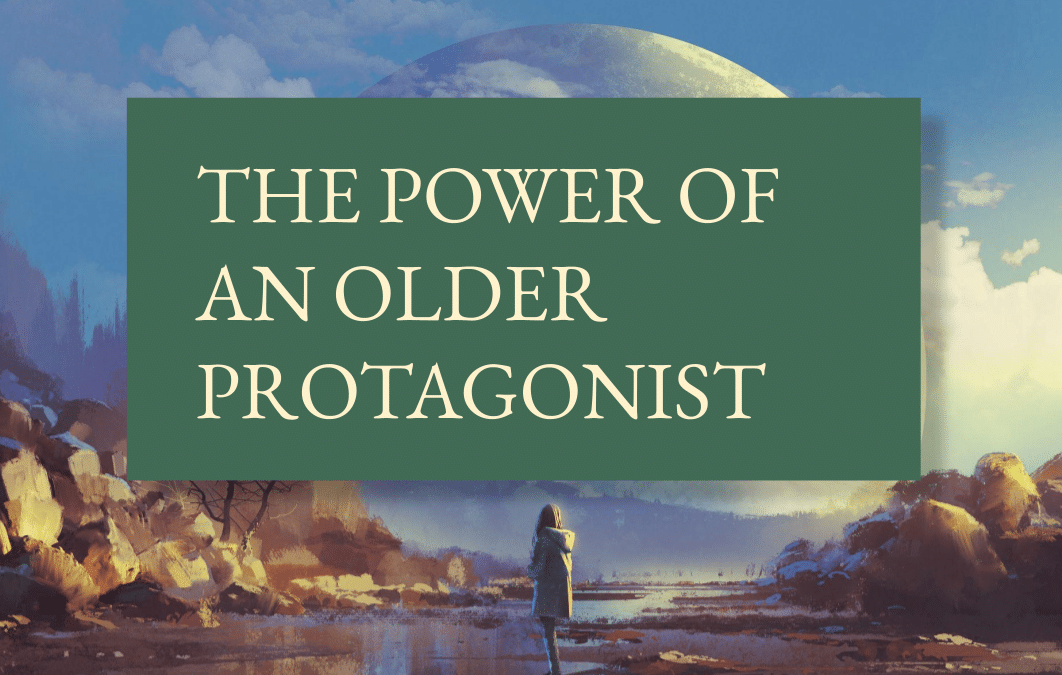In fantasy, a youth finding their power and destiny is an archetype deeply entrenched in our storytelling. In science fiction, the young hero discovering the truth of their place in the world (and what else is out there!) is similarly harnessed. This classic bildungsroman structure following the ‘formative years’ of a protagonist allows the author to utilise the trials of adolescence and the inquisitive nature of that time in a character’s life to infuse the plot with conflict.
Meanwhile, the naiveté of a younger character can be an opportunity to seamlessly introduce the worldbuilding elements so vital to both fantasy and science fiction: as the character discovers the world, so does the reader.
Younger protagonists are also often at the behest of powers in the world, be that the state, their parents, an old wizard, or a crazed robot. Overcoming the relative powerlessness of youth to affect change is a well-worn story structure that certainly resonates with many readers.
However, there’s an incredible power to taking a less common tack and choosing to follow an older protagonist.
This article will help you to consider the unique opportunities an older protagonist can afford you in terms of your storytelling and worldbuilding. We will also consider the big potential pitfall of older protagonists. Handled correctly, a more mature and experienced central character can help give depth and resonance to your world, whilst potentially connecting with your readership in a wholly different way.
Why try an older protagonist?
1. More historical perspective for worldbuilding
Remember that your world has its own history. One distinction between the young and the old is that the young learn history, whilst the old have lived it.
The difference between a child learning the dry facts of the Kuiper Belt Revolution of ’67 and the adult who lost friends in the uprising, who took active part, and who carries the scars and trauma is a vast gulf. With the younger character, you can perhaps explore that history with fresh eyes, but with the older one, you have access to a deeper suite of tools: your character’s memories!
As well as showing us what was, the way an older character experiences the present can show us how things have changed. This kind of subtle worldbuilding is harder to do with a younger protagonist, whereas it makes perfect sense for an older character to reflect on how things used to be. That can help to add colour and depth to your world.
2. Broader networks born of more experiences to draw on
Older characters have established relationships. Who are their friends, family, co-workers? These networks are bound to be much broader than those of the usual youthful ingénue, whose acquaintances are typically limited to family and the classmates in their cohort, be that at magic school or a Martian military base.
The older protagonist has probably experienced a few jobs, a few relationships, and surely a few big mistakes! All of these are potential tools for the author to use as they navigate the plot.
3. More deeply ingrained strengths to use and weaknesses to overcome
Older characters will have established skillsets they can bring to the story’s challenges. Even better, the necessary finesse with these skills will be more believable when performed by a seasoned hand than by a teenager with a few weeks of training, earning respect for your character from readers that’s all the more genuine for being rooted in reality. We may cheer for young heroes doing the impossible, but deep down, we know that real skill requires long practice.
Just as importantly, an older character will also have blind spots and weaknesses that will have had time to bloom into more serious or deeply rooted habits than would be possible with a fresh-out-of-the-box main character.
All of these traits, positive and negative, offer the capacity to showcase character growth and change. By starting the story at a point where a good chunk of life has already been lived, you afford yourself a much wider array of tantalising backstories. Why is your character the way they are? Have they always been that way, or did they once live a different life as a very different person? Have they tried to change before?
What is important to realise is that the older character is not a finished piece. People are continually evolving and growing as they live. Whilst adolescence is perhaps the most defined and universal crucible, it’s not the only one, and these other life changes can be just as compelling.
4. More variety in your POVs
One place where older characters can really shine is in stories with multiple points of view (POVs). Multi-POV stories can benefit from having protagonists at different places on the age spectrum, allowing for all the benefits we are discussing here. In these cases, your older characters can operate at a different level of plot and action than your younger POVs, offering a new perspective.
Think about Ned Stark in A Song of Ice and Fire. He’s fought his wars, settled, and made his family. His storyline of reluctant politicking contrasts sharply with another POV character, Jon Snow, a youth finding his skills and his way in the world. But both offer their own perspectives on how the world works, with the experience and history of the older character adding further nuance and depth to the more genre-conventional actions and interpretations of the younger characters
In addition, having disparate ages in these POVs helps to keep them separate stylistically, immersing the reader in multiple storylines with minimal confusion.
The big pitfall of older protagonists
When writing an older protagonist, be mindful to ensure that this current story does, indeed, matter to them just as much as it would to a young character. If everything interesting about a character is in their past, fascinating as it may be, why would we want to spend time with them now?
Don’t let your protagonist get stuck in their own past. Instead, keep an eye forward, not only revelling in the intricacies of backstory, but also in what the character can do in the story present, based on who that past has made them.
In the end…
When done correctly, an older protagonist allows you to explore your world by mining the character’s history and expand your cast of characters with a wider network of varied people who are reasonable for an older person to know, in comparison to an inexperienced youth. Combined with this, the more calcified nature of positive and negative traits in an older protagonist offers a challenge to growth that can be satisfying to overcome with the reader.
An older protagonist may not be raising the magic sword or stepping into the cockpit of the starfighter for the first time. But if you can harness the experience they bring to bear, your story will be the richer for it.
Ian Green is a science fiction and fantasy writer from Northern Scotland. He is the author of The Rotstorm epic fantasy series, which began with The Gauntlet and the Fist Beneath. His short fiction has won the BBC Radio 4 Opening Lines competition and the Futurebook Future Fiction prize. Visit his website here.
Do you write fantasy or science fiction?
Join our email list for regular writing tips, resources, and promotions.

